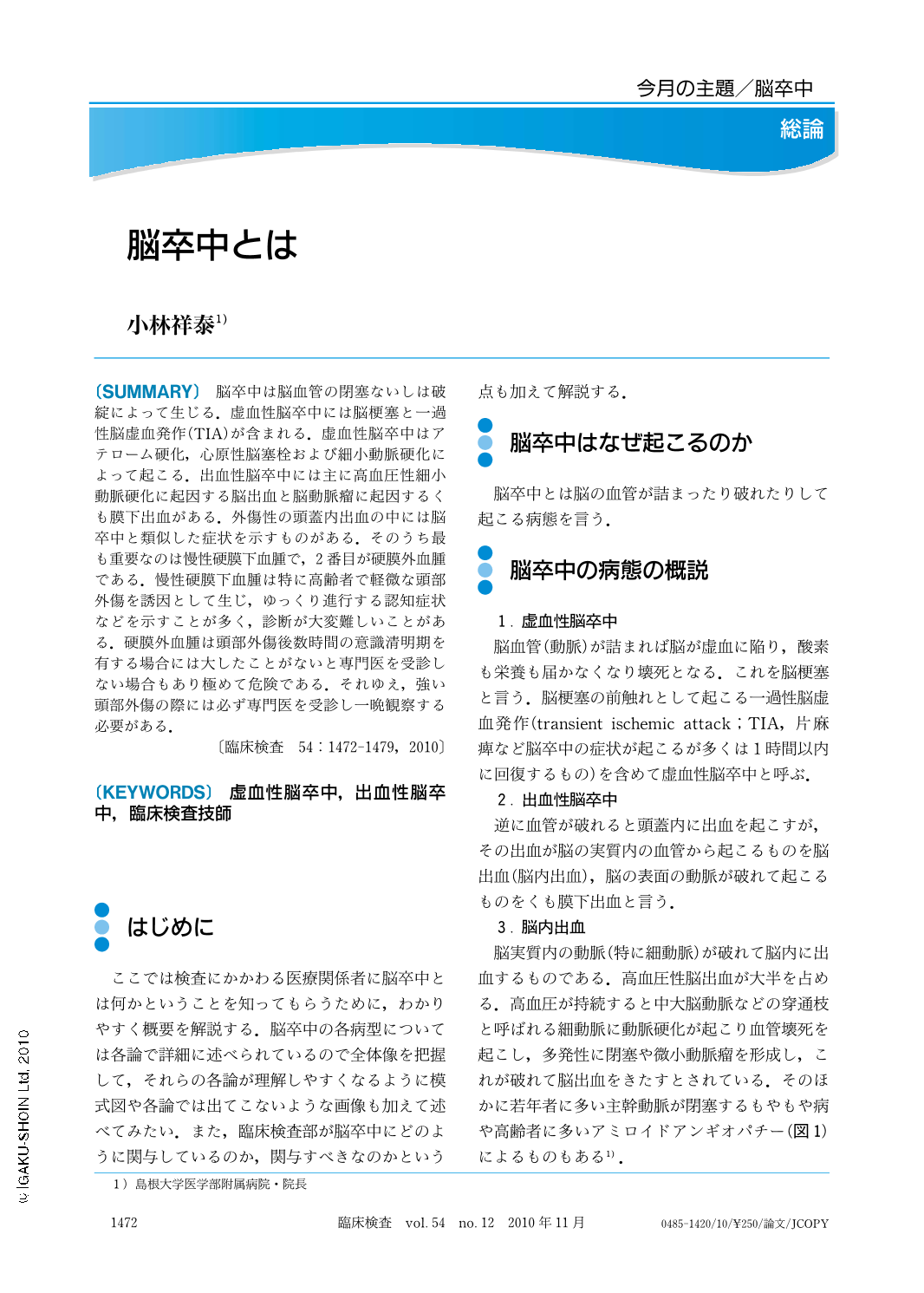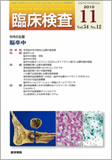Japanese
English
- 有料閲覧
- Abstract 文献概要
- 1ページ目 Look Inside
- 参考文献 Reference
脳卒中は脳血管の閉塞ないしは破綻によって生じる.虚血性脳卒中には脳梗塞と一過性脳虚血発作(TIA)が含まれる.虚血性脳卒中はアテローム硬化,心原性脳塞栓および細小動脈硬化によって起こる.出血性脳卒中には主に高血圧性細小動脈硬化に起因する脳出血と脳動脈瘤に起因するくも膜下出血がある.外傷性の頭蓋内出血の中には脳卒中と類似した症状を示すものがある.そのうち最も重要なのは慢性硬膜下血腫で,2番目が硬膜外血腫である.慢性硬膜下血腫は特に高齢者で軽微な頭部外傷を誘因として生じ,ゆっくり進行する認知症状などを示すことが多く,診断が大変難しいことがある.硬膜外血腫は頭部外傷後数時間の意識清明期を有する場合には大したことがないと専門医を受診しない場合もあり極めて危険である.それゆえ,強い頭部外傷の際には必ず専門医を受診し一晩観察する必要がある.
Stroke occurs due to cerebral blood vessel occlusion or rupture. Ischemic stroke includes cerebral infarction and transient ischemic attack (TIA). Ischemic stroke is caused by atherosclerosis, cardiogenic embolism and small artery sclerosis. Hemorrhagic stroke including cerebral hemorrhage is mainly caused by hypertensive small artery arterial sclerosis and subarachnoid hemorrhage due to cerebral artery aneurysm. Some intracranial hemorrhages caused by trauma also show similar symptoms to stroke. The most important one is chronic subdural hematoma and the second one is epidural hematoma. Subdural hematoma occurs due to mild head trauma especially in the elderly and slow progression of symptoms such as dementia, so sometimes diagnosis is very difficult. Epidural hematoma is also very dangerous if the patient has a lucid interval for several hours after head trauma. Therefore, overnight observation is necessary in such cases.

Copyright © 2010, Igaku-Shoin Ltd. All rights reserved.


